The reason people visit Heraklion is clear, as it offers museums and attractions, food, nightlife, and beaches.
The Koules Venetian Fortress is Heraklion's main landmark. This 16th century fortress and its surrounding structure embody an impressive stone mass of solid walls that have stood the test of time. The fortress is open to visitors who wish to see up close the restored reliefs of the Lion of St. Mark, or enjoy views from above on the turret and roof.
Examples of similar Venetian architecture exist in various places throughout the city. The Venetian Loggia, now Heraklion's city hall, is a two-story Venetian mansion, which used to be a meeting place for the nobles of Crete in the 15th Century. There are also many fountains of the Venetian era still preserved in the city, such as the Bembo fountain, the Priuli fountain, Palmeti fountain, Sagredo fountain and Morosini fountain (located in Lions Square).
Other notable landmarks include statues and sculptures commemorating significant events and figures of the island's history, like El Greco, Vitsentzos Kornaros, Nikos Kazantzakis and Eleftherios Venizelos.
The top museum in the city is by far the Archaeological Museum located on a corner of Eleftherias Square. Just walk down Dedalou off of 25th August and it will lead to right to the square where the museum is located. The museum spans a period starting several thousand years ago, through the Minoan, post-Minoan and later periods with findings from Knossos, Archanes, Phaestos, Zakros and many other archeological sites in Crete. A few highlights include the Phaestos disc and famous leaping bull fresco, but the museum holds a plethora of artifacts from Hellenic and Roman sculptures to ancient coins, jewelry, wall-paintings, and pottery. This museum is a major highlight of Heraklion and can easily occupy a few hours of your day.
Located just about 20-25 minutes from Heraklion's center is the archaeological site of the Palace of Knossos. A major piece of Minoan history, the excavated palace is great way to experience walk through the Bronze Age. Much of the place had been well-restored by English archaeologist Arthur Evans starting in 1900, which gives visitors today a visual of the vibrant colors and frescoes used in Minoan architecture. A thorough exploration of the site is another activity that can take several hours, and further artifacts from Knossos can be seen at the Archaeological Museum mentioned above.
Museums and Attractions:
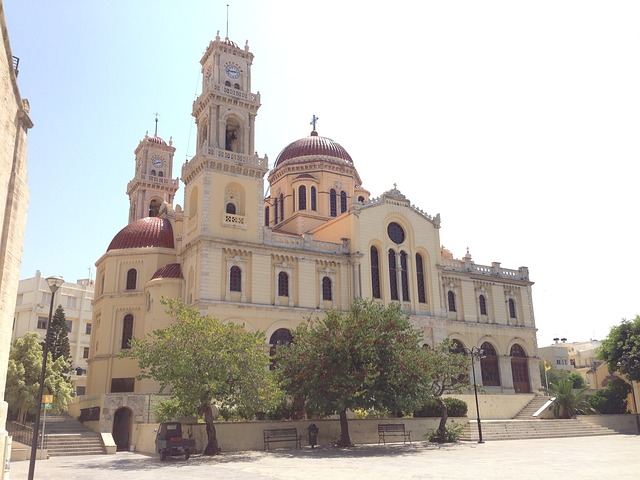 Heraklion is well-known for its iconic museums and renowned landmarks. The city is filled with historical sights and archeological ruins. The impressive Palace of Knossos is a must-see, but also make sure you visit the Koules Fortress, the Heraklion Archaeological Museum, and the Natural History Museum of Crete.
Heraklion is well-known for its iconic museums and renowned landmarks. The city is filled with historical sights and archeological ruins. The impressive Palace of Knossos is a must-see, but also make sure you visit the Koules Fortress, the Heraklion Archaeological Museum, and the Natural History Museum of Crete.
Beaches:
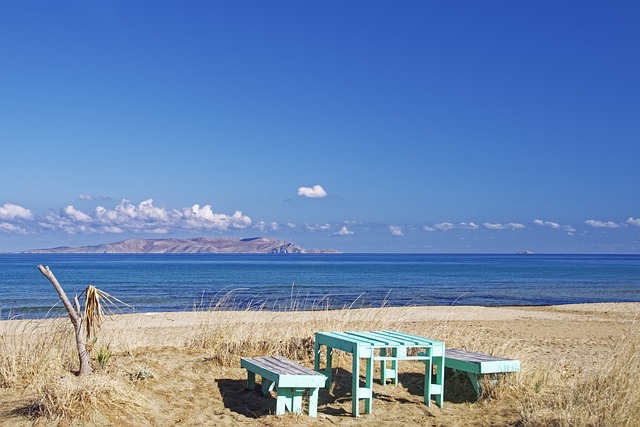 Numerous travelers flock to Heraklion to unwind on the beach. You'll find world-class beaches just outside of town, if you're willing to explore a little. Agia Pelagia Beach is about half an hour away and Limanakia Beach is also not a bad day trip. If you want to stay closer to town, head to nearby Amnissos Beach.
Numerous travelers flock to Heraklion to unwind on the beach. You'll find world-class beaches just outside of town, if you're willing to explore a little. Agia Pelagia Beach is about half an hour away and Limanakia Beach is also not a bad day trip. If you want to stay closer to town, head to nearby Amnissos Beach.
A nice way to explore destinations in Heraklion is with local tours that last just a few hours. This way you can see as much as possible in an efficient way with knowledgable guides. Prices vary by the type of activity or tour, the dates, and the size of the group. Here are a few of the highest rated tours by previous visitors:
- Explore Crete by Sunset Full-Day Guided Tour for $101 details
- Heraklion Half-Day Tour | Cruise Friendly | Knossos & Top Sights for $72 details
- Daily cruises to Dia Island with All -Inclusive Meal and drinks for $78 details
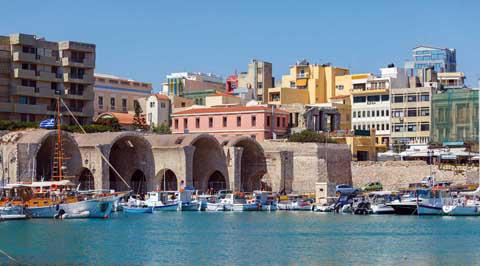 Heraklion, Crete, Greece
Heraklion, Crete, Greece

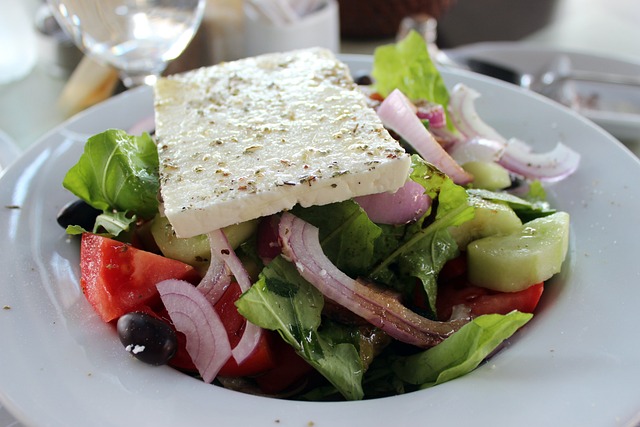
 Heraklion is well-known for its iconic museums and renowned landmarks. The city is filled with historical sights and archeological ruins. The impressive Palace of Knossos is a must-see, but also make sure you visit the Koules Fortress, the Heraklion Archaeological Museum, and the Natural History Museum of Crete.
Heraklion is well-known for its iconic museums and renowned landmarks. The city is filled with historical sights and archeological ruins. The impressive Palace of Knossos is a must-see, but also make sure you visit the Koules Fortress, the Heraklion Archaeological Museum, and the Natural History Museum of Crete. Numerous travelers flock to Heraklion to unwind on the beach. You'll find world-class beaches just outside of town, if you're willing to explore a little. Agia Pelagia Beach is about half an hour away and Limanakia Beach is also not a bad day trip. If you want to stay closer to town, head to nearby Amnissos Beach.
Numerous travelers flock to Heraklion to unwind on the beach. You'll find world-class beaches just outside of town, if you're willing to explore a little. Agia Pelagia Beach is about half an hour away and Limanakia Beach is also not a bad day trip. If you want to stay closer to town, head to nearby Amnissos Beach.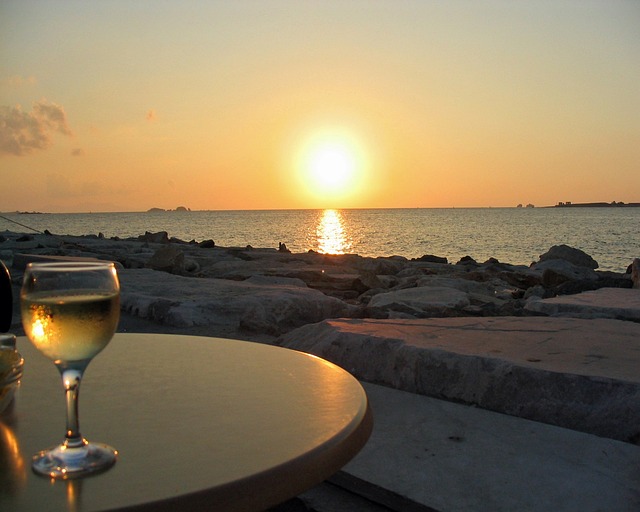
 Budget Your Trip is all about finding out how much everything costs so that you can travel cheaper and longer. Created by avid travelers Laurie and Bryan, our goal is to help you plan your next trip on the right budget. With average daily travel costs that are calculated from the budgets of real travelers, plus an analysis of hotel and tour prices, you can find out how much money you need to plan your next adventure. We also have plenty of travel advice, accommodation reviews, and activity suggestions.
Budget Your Trip is all about finding out how much everything costs so that you can travel cheaper and longer. Created by avid travelers Laurie and Bryan, our goal is to help you plan your next trip on the right budget. With average daily travel costs that are calculated from the budgets of real travelers, plus an analysis of hotel and tour prices, you can find out how much money you need to plan your next adventure. We also have plenty of travel advice, accommodation reviews, and activity suggestions.
We found a cheap but modern hotel right in the middle of the historic area in town. The restaurants in this area were all really good and not very expensive, too. It's easy to walk around to most places, and there are some free and cheap museums.